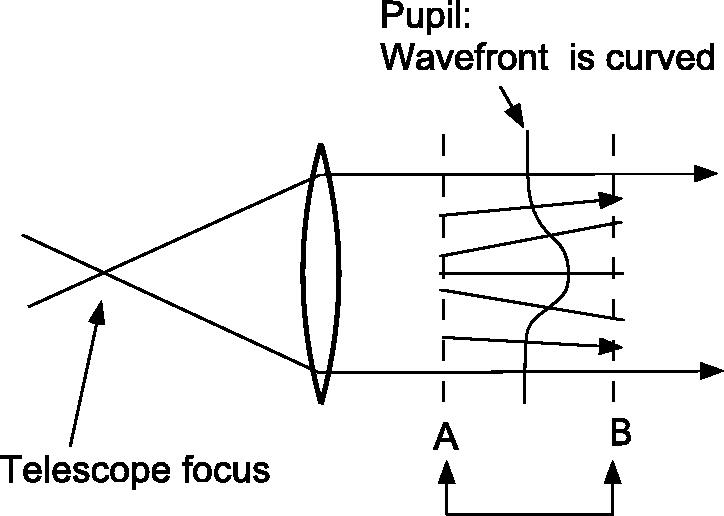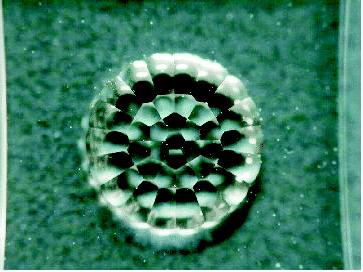Curvature Sensing
The wavefront sensor (WFS) of Subaru AO is based on curvature measurements of atmospheric turbulence. The wavefront curvature distribution in the entrance pupil is converted to a distribution of light intensity modulation at two positions before and after the pupil plane. The actual switching between the two planes is performed using a vibrating mirror in the WFS optics.

Conceptual figure of curvature sensing
The modulated light intensity signal is sampled at each sub-aperture of a microlens array and fed through optical fibers to photon-counting avalanche photodiode (APD) modules. The present Subaru AO has 36 sub-apertures as shown below.

Lenslet array for Subaru AO
For low-order compensation such as the present Subaru AO, the method of curvature-sensing has the advantage of providing a higher Strehl ratio compared with the other method, Shack-Hartmann sensing. It also provides point spread functions with smoother wings, minimizing waffle-mode artifacts.